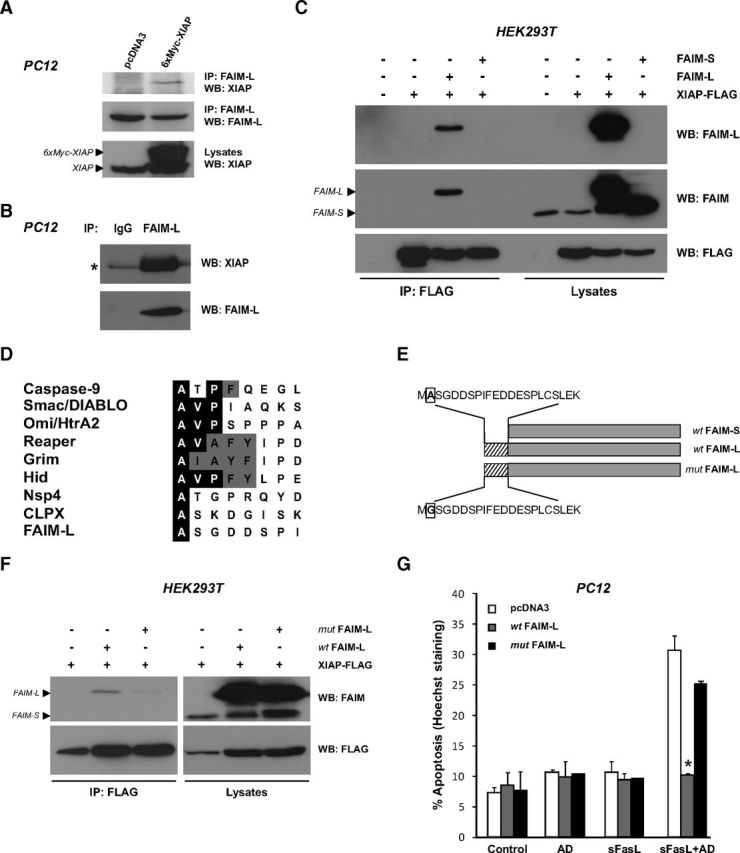Figure 4.

FAIM-L, but not FAIM-S, interacts with XIAP through an IBM domain. A, For semi-endogenous interaction of FAIM-L with XIAP, PC12 cells were transfected with pcDNA3 or 6xMyc-XIAP plasmids and endogenous FAIM-L was immunoprecipitated using a specific FAIM-L antibody before immunoblotting as indicated. B, Endogenous interaction of FAIM-L with XIAP was assessed in PC12 cells. FAIM-L was immunoprecipitated as in A followed by Western blotting as indicated. An anti-Myc antibody IgG was used as negative control. *Small chain Ig position. C, HEK293T cells were transfected with pcDNA3 (−), FAIM-S, FAIM-L, and XIAP-FLAG expression plasmids as indicated. FLAG-tagged XIAP was immunoprecipitated before immunoblotting with FAIM-L, FAIM, and FLAG antibodies. The FAIM-L antibody raised against the FAIM-L specific N terminus 22 amino acids only detects FAIM-L, whereas anti-FAIM (raised against full-length FAIM-S) detects both isoforms. D, Comparison of the N termini of some mammalian and Drosophila IAP-binding proteins. Identical amino acids are highlighted with a black background and similar residues with a gray background. All mature IAP-binding proteins have an N-terminal alanine residue, whereas valine in the second position and proline in the third position are common in several IAP antagonists. Alternatively, Nsp4, CLPX, reported by Verhagen et al. (2007), and FAIM-L are IAP-binding proteins whose IBM is limited only to the presence of the N-terminal alanine residue. E, Schematic representation of wild-type wt FAIM-L and wt FAIM-S isoforms, as well as the mutant FAIM-L (mut FAIM-L) where the first alanine (A, in a box) was mutated to a glycine (G). Hatched boxes represent the FAIM-L-specific 22 amino acids; gray boxes represent 100% similarity between wt FAIM-L and wt FAIM-S. F, HEK293T cells were transfected as indicated, and FLAG-tagged XIAP was immunoprecipitated as in C. G, PC12 cells were transfected with pcDNA3, wt FAIM-L, or mut FAIM-L expression plasmids and treated with sFasL (100 ng/ml) and AD (1 nm) for 24 h. Percentage of apoptotic cells was assessed. The mean of three independent experiments is represented. Error bars indicate SD. Student test was performed, comparing FAIM-L-transfected cells treated with sFasL+AD with their pcDNA3-treated counterpart. *p ≤ 0.01.
